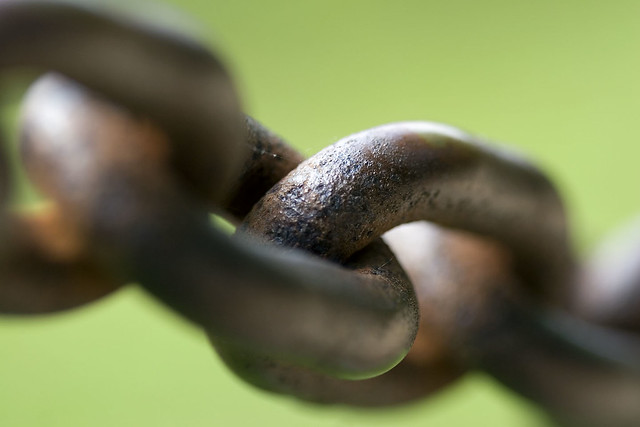Link building isn’t always about discovering new opportunities. Sometimes it can simply involve taking advantage of opportunities that already exist but haven’t been tapped into yet. The following are five strategies you can use to claim links that you rightfully deserve.

Photo Credit: dcJohn on Flickr
Google Alerts for Brand Mentions
If someone mentions your name, your business name, or your website online, then you’ll likely want them to link to you to. Google Alerts makes it easy to keep track of your mentions via email or RSS.
Each time you see a mention, check it out to make sure the website is linking back to you. If they or not, or you would prefer they link to something else, send a friendly email to the webmaster, author, or editor to see if you can get them to add or change the link. Most typically respond positively to this type of request.
Redirection for Missing Pages
Google Webmaster Tools makes it easy to find out if you have any missing pages on your website. You can find these under Health > Crawl Errors, then click on Not found errors (if any).
To find out how valuable this strategy can be, simply click on some of the URLs listed as missing. Then click on the Linked from tab to see how many backlinks are pointing to the missing URL. You could gain redirection juice on a huge amount of links if you go through the redirection process.
If you’re not a fan of messing with your server side files and have a WordPress website, you can create redirections from your WordPress dashboard using the Redirection plugin. Not only can you create the redirects, but you can see the number of times people have clicked on the bad link which should further convince you to keep up with your broken links!
Change Requests for Old Domains
While you can redirect broken links on your own domain, if you no longer own a domain that you once possessed, you won’t be able to simply redirect those links to new ones on your current website. In this case, you’ll want to contact anyone linked to you old domains and ask for your links to be updated.
This can be a tricky task, however, if your old domain is now owned by someone else who has a similar purpose or similar content.
Aside from domains you’ve lost, this is also a good way to reclaim links built to properties you used to own on hosted sites like WordPress.com or other free platforms. Maybe you started out your blog on Blogger and received a lot of links to it, but now have a blog on your own domain. It never hurts to go back, check your old properties’ backlinks, and see if you can get them changed to your new site.
Updated Links for Lost Offsite Content
Have you ever submitted a great piece of content to a site, only to find that down the road, the site no longer exists? If you saved your content (which you always should), you could get some links from this opportunity.
First, you’ll want to see if there are links built to the URL your content previously existed upon. If there are, take that content and place it on your own website. Then you’ll want to contact all of the sites linked to your old piece of offsite content and ask them to link to the new content. This should lead to good results as most people would want to make sure the content they linked to is still live, assuming those sites are still being maintained.
Credit for Content
If you use infographics in your link building strategy, then you will want to make sure you have gotten the maximum number of links possible for each infographic. No matter how simple you make it for people to link back to your website along with your infographic, you may still discover lots of websites using it without a link.
To find out, use Google Image search. Upload your infographic and let Google go out and discover any instances of it on the web. Alternatively, you can also do a Google search for the exact title of your infographic. As you discover sites using your infographic, you can contact them and ask that they add attribution back to your website.
This strategy also works well for Creative Commons images. If you create great images that people can use on their websites and blogs, make them Creative Commons licensed. Share them on sites like Flickr. Then look for websites using the images to make sure they have been credited properly back to you with a backlink to your website. If not, request one.
What other strategies do you use to claim pre-existing link opportunities? Please share in the comments!

 Site Explorer
Site Explorer Keyword tool
Keyword tool Google Algorithm Changes
Google Algorithm Changes

Redirection can also be used to shorten referral & affiliate links on your site. It also has a built in feature to log 404 errors. You can check this in addition to Google Webmaster Tools.
Hey, loved this ideas. Actually I am a freelancer and I am badly in need of the way how could I find who mentioned my brand? Can you share few search term or techniques?